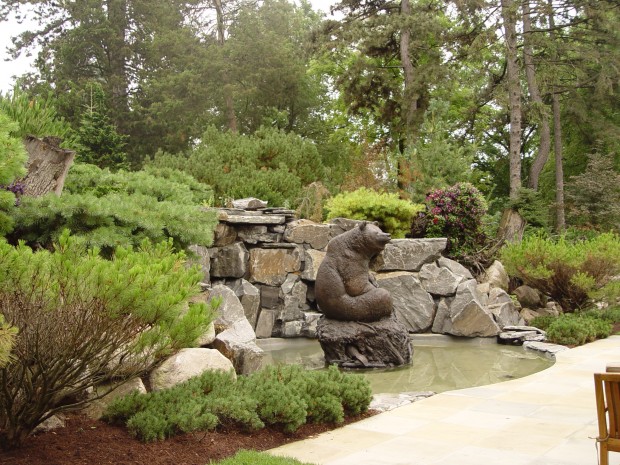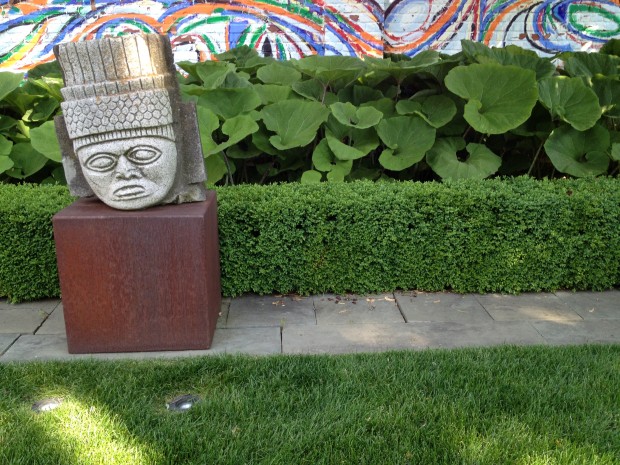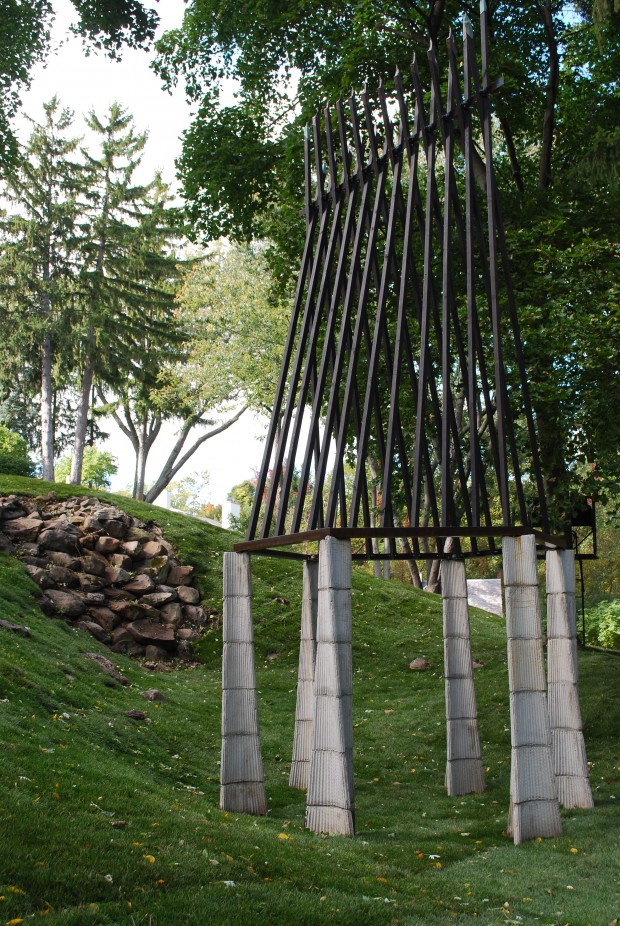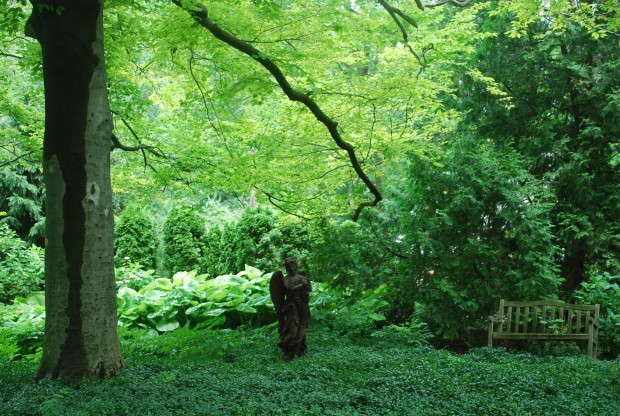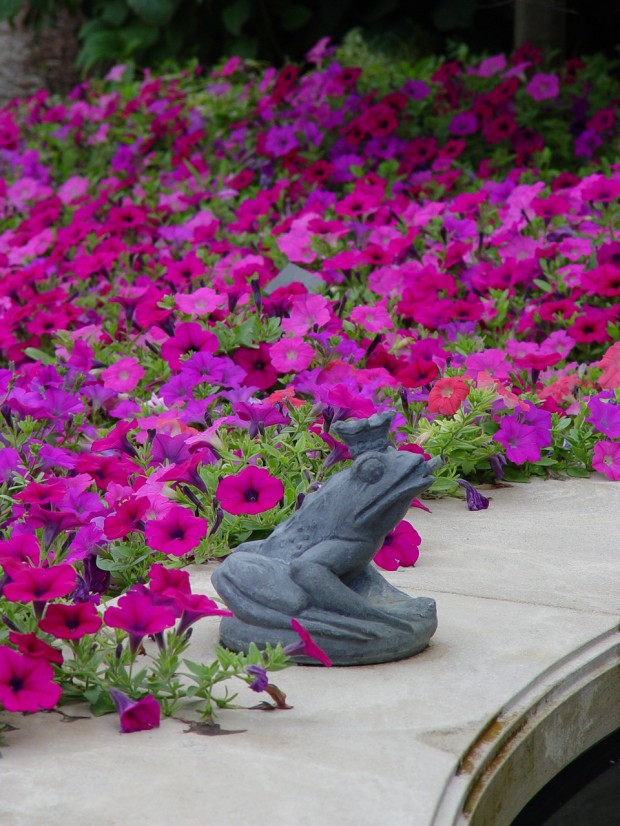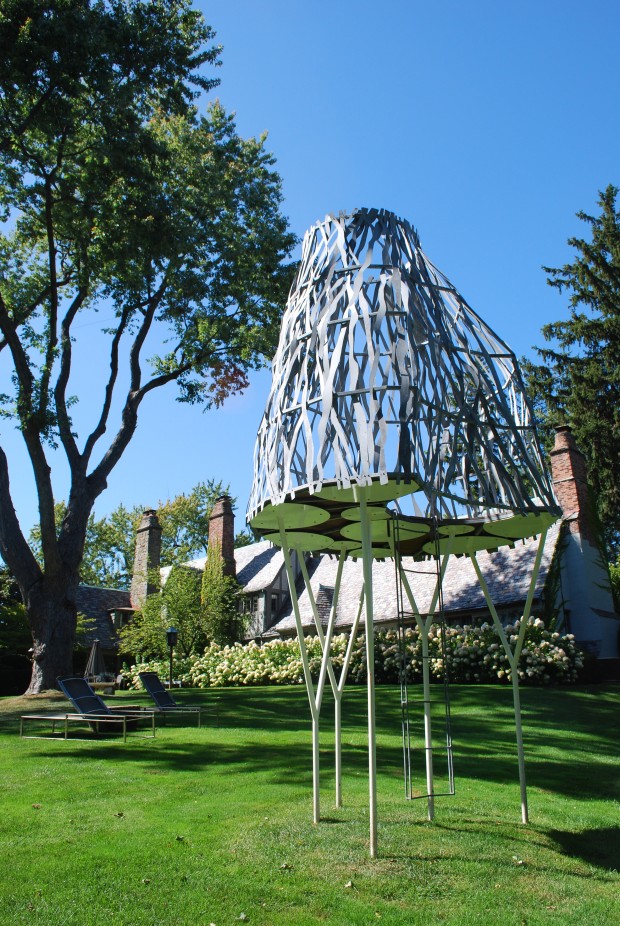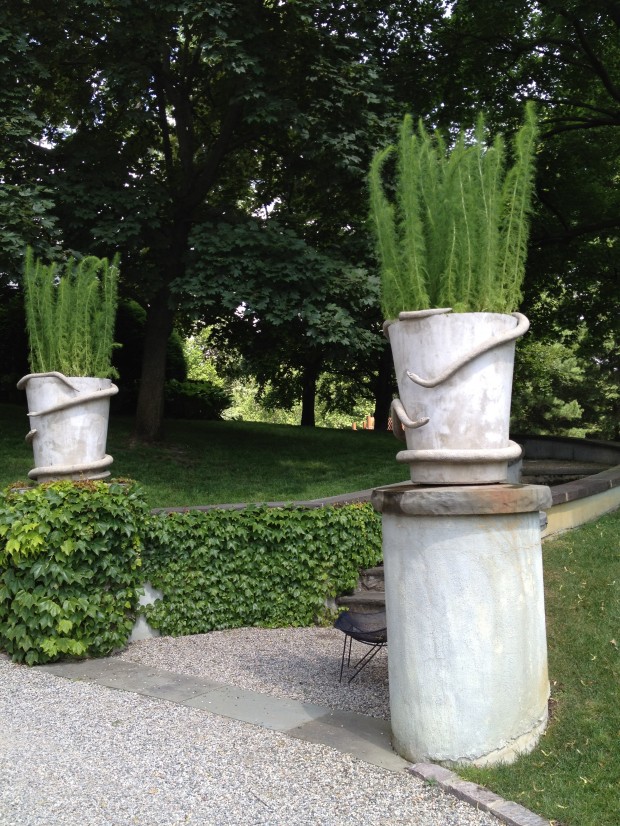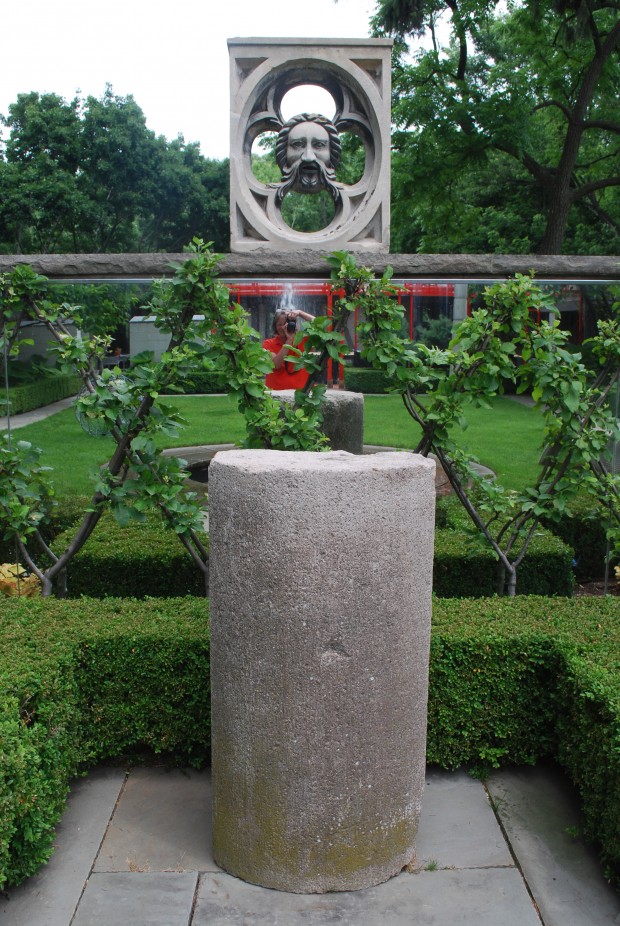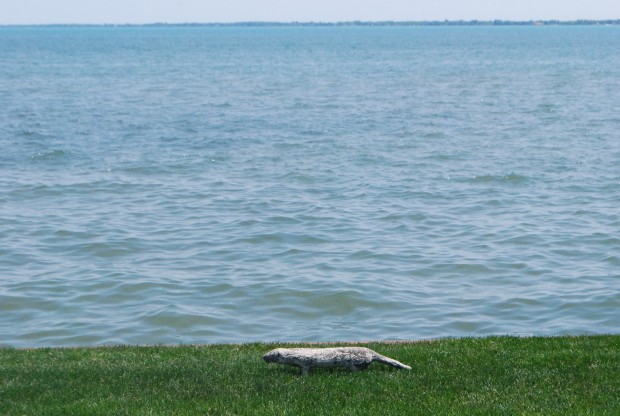This month’s topic engaging the Garden Designers Roundtable-sculpture in the landscape. Like any form of art, what constitutes sculpture is in the eye of the beholder. An ancient tree, or a specimen espalier can be a sculpture. An uprooted tree stump, a geode, sculpted soil seeded with grass-I am very democratic when it comes to what constitutes sculpture. I truly believe that whatever a passionate gardener chooses to designate as garden sculpture is in fact garden sculpture. The home any gardener makes for a sculpture speaks much to what that sculpture means to them. This particularly imposing bronze sculpture of a bear perched on a beaver’s nest was purchased by a client who loved and appreciated it. The sculpture asked for a landscape to go with. Garden sculpture can be placed wherever, but it needs a home. In this case, a waterfall and pond. A waterfall backdrop comprised of tons of rock. Lots of dwarf evergreens. A raft of old and large tree stumps. A stumpery was a perfect place, a home, for this this sculpture. Sculpture in the landscape needs a carefully and generously designed place to be.
A landscape is a living sculpture. A constantly changing, and evolving sculpture. This sculpture was carved by a person from a natural material-stone. This hand carved stone bust spent a good deal of the past umpteen years underground. The process of bringing it back into the light? A simple placement on a steel pedestal. In a garden. Into an orderly and linear landscape. This astonishing stone sculpture is all the better, presented with the butterburrs, and the boxwood. The landscape company makes for a living experience. Material. Sculptor. garden. experience. A good and on going experience.
This contemporary sculpture involved regrading and grassing a steep slope. At that steepest moment, we amassed a flock of rocks that held the slope. The relationship of the concrete legs, the steel, and that congestion of rocks-engaging. Interesting.
This classical sculpture is set back in a field of groundcover. Garden sculpture can set the mood in a garden. A garden with atmosphere is a lovely garden indeed. A simple space provides breathing room. The figure is integrated into the shade garden under the canopy of an old beech.
There is no need for a garden sculpture to be big, expensive, or otherwise imposing. The only requirement? Great sculpture invites interaction. Reaction. engagement. This very small lead frog organizes a surrounding garden of considerable size. All the color notwithstanding, this diminuitive sculpture organizes one’s experience of this garden. A rich experience-memorable.
There are those containers that I would describe as sculptural. A one of a kind expression. Containers call for a planting that respects that. The containers you choose for your garden-sculptures, each and every one of them. This particular glazed terra cotta container-strikingly textural and of a beautiful color. The blue succulents are similarly textured, but quite contrasting in color. Eaxch element is visually stronger, given the other.
This cast iron dog, one of a pair of bloodhounds forged by Alfred Jacquemart in France in the 19th century, they guard my home. They sit on simple concrete plinths. Kept company by some old picea mucrunulatum, hellebores, hostas, and sweet woodriff, they are firmly planted in my landscape. They have a home that seems natural and fitting to me. No matter the weather or the season, they successfully engage me day after day. How so? They belong here.
Contemporary sculpture asks for lots of space. Contemporary sculpture to my eye is much about striking graphics. Unusual forms. A serious dialogue. Astonishing materials. Room to view, lots of room to appreciate-they ask for this. The placement of this sculpture in the lawn permits physical as well as visual interaction.
These hand made concrete pots with snake detail are very sculptural. The planting? Simple. Contrasting in texture. The care any gardener takes in the presentation and planting of a pot makes a statement about sculpture. The care you take placing and siting a sculpture says much about what that sculpture means to you. Anything in the garden that means much-fuss.
This hand carved limestone gothic portrait, once a part of a wall, is unrelated in period and origin to the old half round plinth. I placed one on top of the other. My client split them up, via a mirrored wall. Her instinct was to separate them, over the existing landscape. Her placement took the appreciation of that sculpture to a level that was unexpected, and exciting.
This sculpture involving urethane spheres studded with plastic grass is placed in an elaborately constructed 19th century French urn. That placement- delightfully unexpected. The attending modern containers with sculpturally styled plantings provide a lot of company to that nervy plastic expression. I can imagine a lot of lively conversation over that sculpture.
Placing sculpture in the landscape is all about providing a really good home. A believable home. A provocative home. A caring home. An unexpected home. A visually challenging home. No gardener places a sculpture in a landscape that does not mean much to them. Should you be a gardener with a sculpture you wish to place in your landscape, be clear about what that sculpture means to you. Make a meaningful and thoughtful place for it, in your landscape. A clear and deliberate placement makes a strong statement.
I invite you to read how other members of the Garden Designers Roundtable approach art and sculpture in the landscape. They are a lively and articulate group of landscape designers.
Susan Cohan : Miss Rumphius’ Rules : Chatham, NJ
Jocelyn Chilvers : The Art Garden : Denver, CO
Mary Gallagher Gray : Black Walnut Dispatch : Washington, D.C.
Lesley Hegarty & Robert Webber : Hegarty Webber Partnership : Bristol, UK
Jenny Peterson : J Petersen Garden Design : Austin, TX
Deborah Silver : Dirt Simple : Detroit, MI
Rebecca Sweet : Gossip In The Garden : Los Altos, CA
Pam Penick : Digging : Austin, TX
